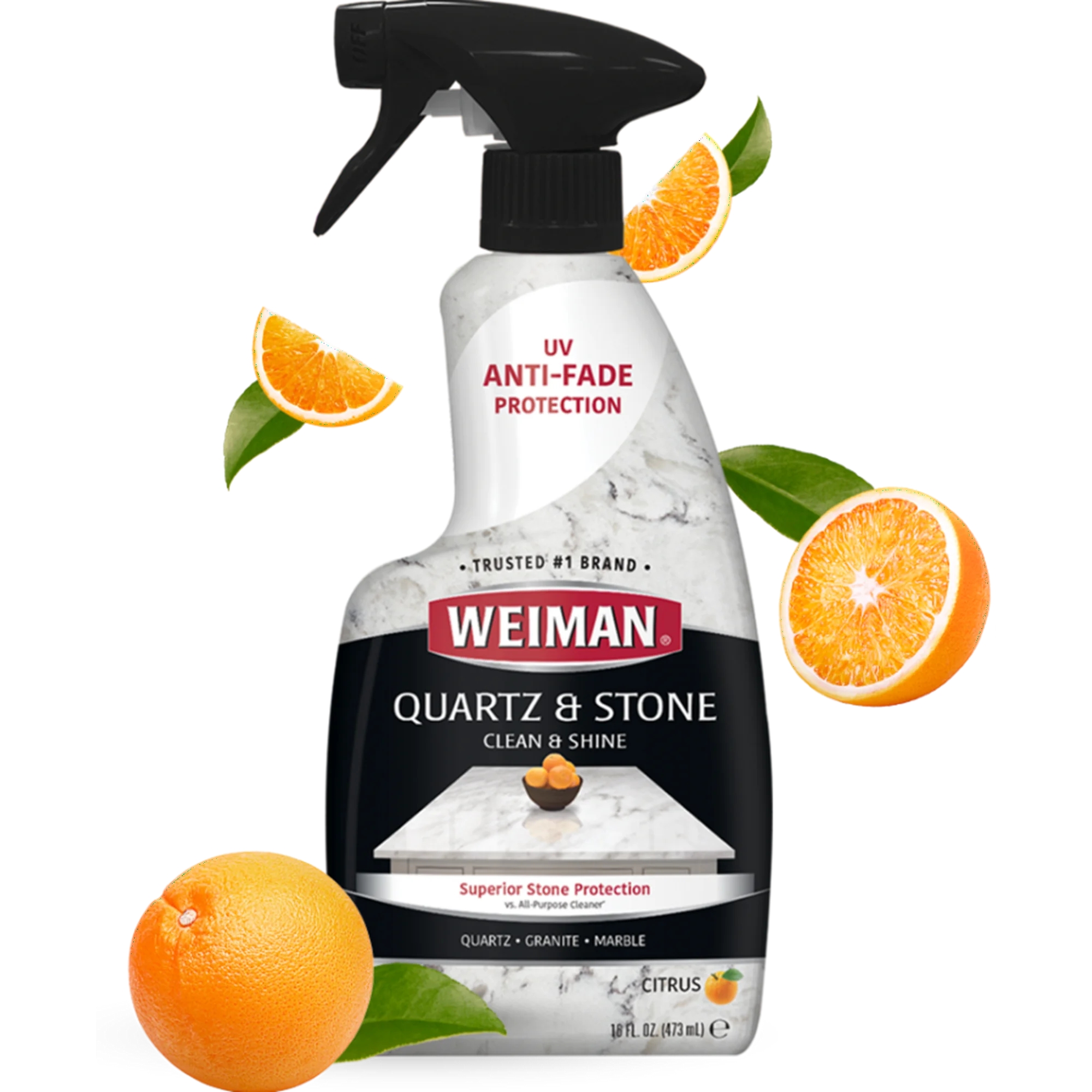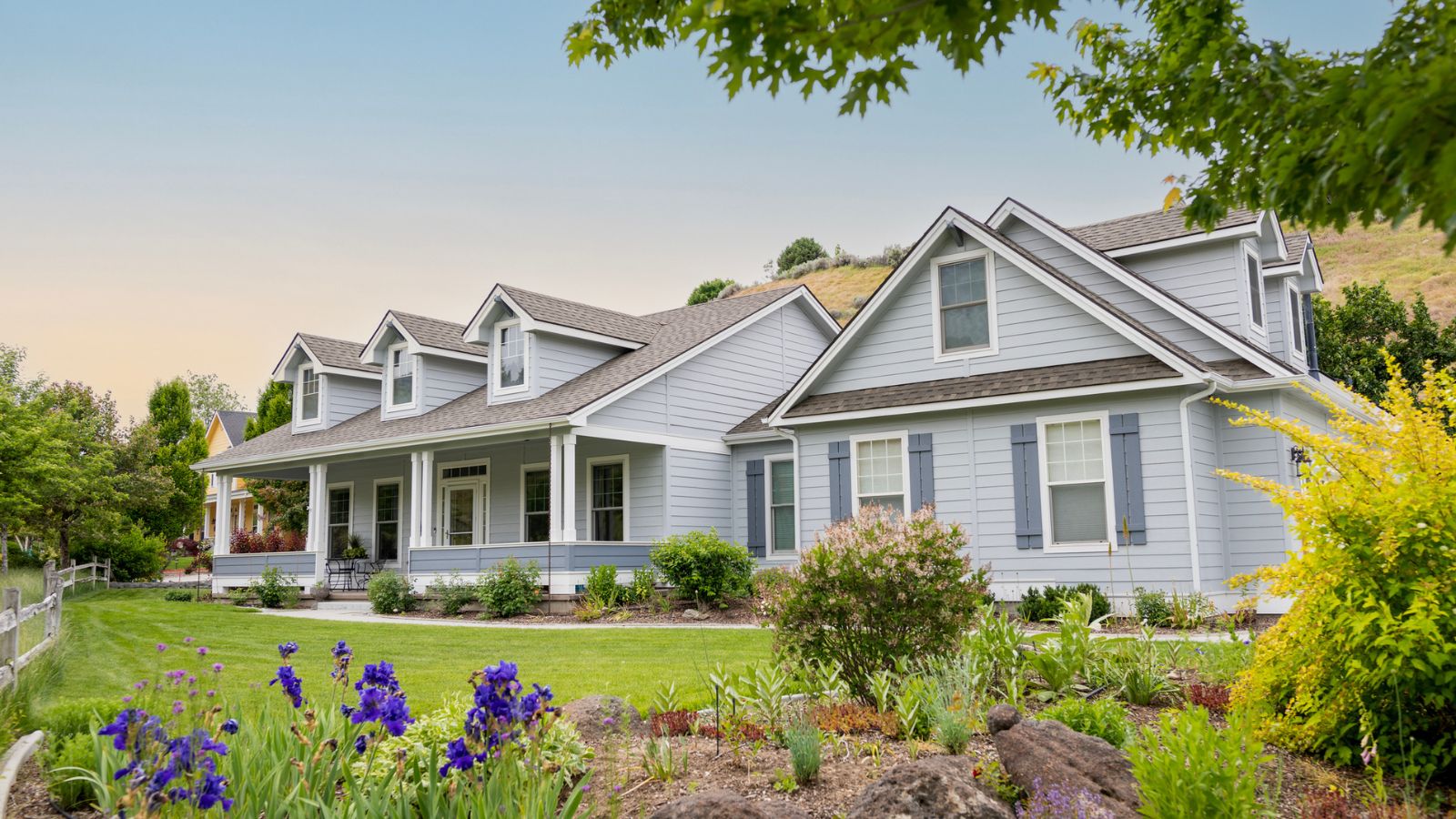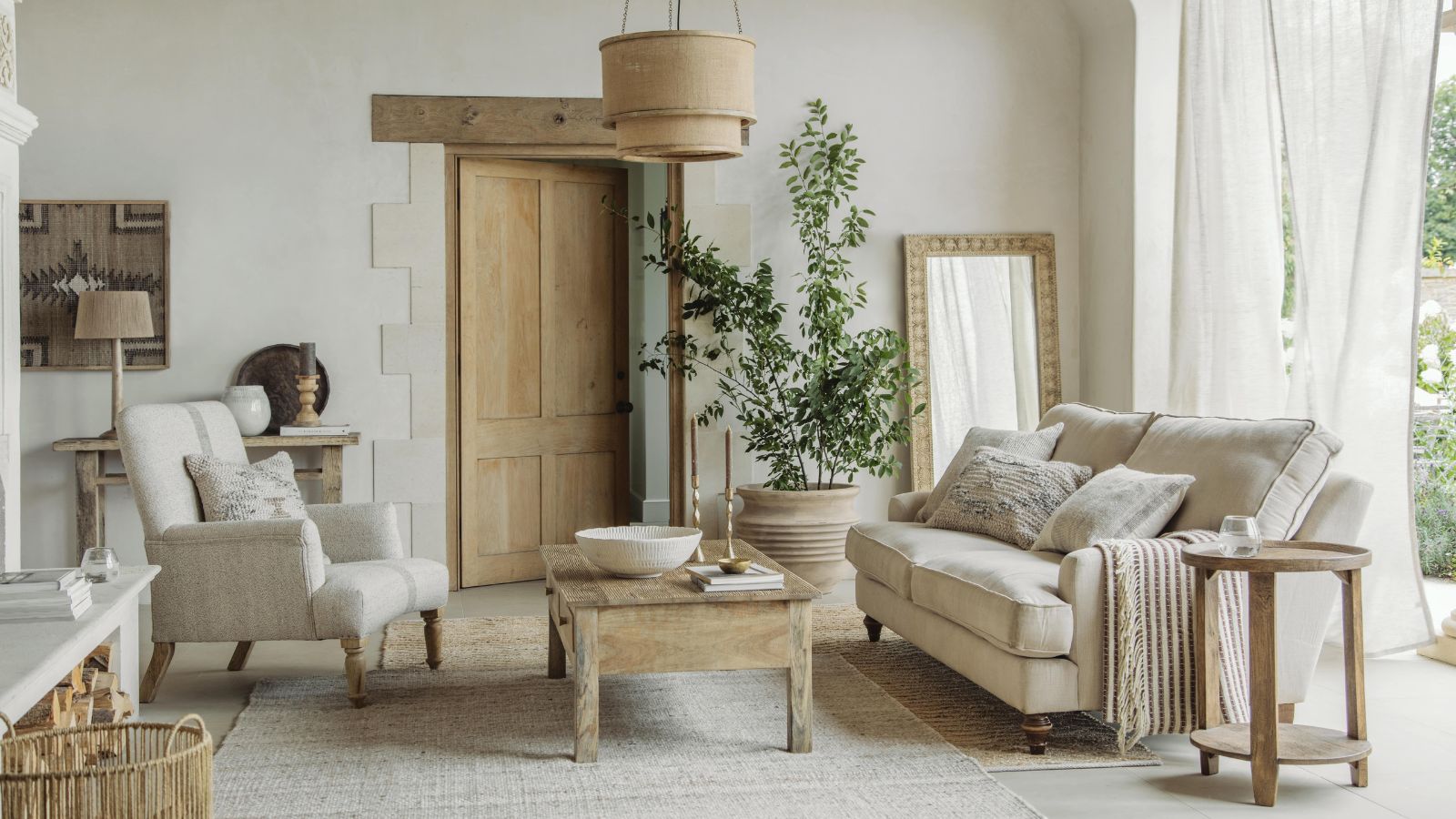How to care for natural stone in your home – 7 expert tips, including what to never do
Keep your stone shining with our pro hacks


Stone surfaces add elegance and durability to any home, but preserving their timeless beauty requires proper maintenance.
From dusting frequently to avoiding heat, our cleaning experts reveal seven simple steps to ensure your natural stone retains its shine, plus what to never do.
Armed with the ultimate cleaning supplies and our expert advice, your natural stone will retain its wow factor for years to come.
1. Dust frequently

Dust particles can scratch natural stone surfaces over time. Karina Toner, operations manager at Spekless Cleaning, says, 'Dust natural stone surfaces weekly with a dry, soft microfiber cloth. This simple routine removes particles that can become abrasive, scratching the surface if left unchecked.
'Microfiber cloths are gentle and trap dust effectively without scratching, helping keep the surface looking polished. Routine dusting minimizes the need for deeper cleaning, which can wear down the sealant over time.'
Toner recommends Zwipes Microfiber Cleaning Cloths from Amazon, adding, 'These are ideal for natural stone as they’re soft and highly absorbent, leaving the surface streak-free and protected.'
Watch out for these dire dusting mistakes that can actually make your home dirtier.
2. Wipe spills immediately

Natural stone is porous and can absorb liquids, leading to staining.
Toner says, 'When it comes to natural stone, it's important to quickly wipe up spills – especially those containing acidic ingredients like wine, juice, or coffee. Use a soft cloth and water to clean up and follow up with a stone cleaner if needed.
'Promptly removing spills prevents the stone from absorbing liquids and staining. This habit is especially important for lighter stones like marble or limestone, which are more susceptible to stains and etching.'
Scott Store Paper Towels from Walmart are an affordable, fast-absorbing option, ensuring stains aren't allowed time to set in. A gentle blotting motion is often most effective for lifting spills without spreading them.
3. Use a pH-neutral cleaner

Harsh chemicals can damage stone finishes. Toner explains, 'For natural stone, it's important to avoid using acidic cleaners like vinegar, lemon juice, or any bleach-based product. These can strip away the sealant and weaken the stone’s finish, causing permanent etching.
'Opt instead for pH-neutral cleaners, which are balanced, so they don’t erode the stone's protective seal. Simply spray it on the surface and use a microfiber cloth to wipe it away. This extends the life and beauty of the stone while reducing the likelihood of etching and dullness.'
Though multipurpose cleaners sound great, they are actually the first of five cleaning myths that will damage your countertops.
Steven Ip, owner of Cleanzen Boston Cleaning Services, says, 'Neutral cleaners protect the stone’s finish and preserve its natural look to maintain the stone without discoloration or degradation. Products like Bar Keepers Friend Granite & Stone Cleaner from Amazon are ideal as they clean effectively without compromising the integrity of the stone.'
Always rinse with water to remove residue.

This eco-friendly surface spray cleans and polishes granite and stone without ammonia or harsh fumes. Made without parabens and naturally fragranced with plant extracts and essential oils, this biodegradable formula is non-toxic to humans – plus the packaging is made from 100% post-consumer recycled plastic.

Made with plant-based cleaning agents, this beautifully-fragranced spray is ideal for stone surfaces, leaving a sparkle without streaks or stress. Surface-safe on granite, marble and sealed stone, the product is also cruelty free – tested by people, not on animals. The stylish bottle is also made from recycled plastic.

This fresh, citrus-smelling spray's pH-neutral formula safely removes grease, soil, surface stains and watermarks from stone surfaces such as quartz kitchen countertops. It also boasts lasting UV protection, preventing the resins in quartz and other stones from fading or darkening from excessive sunlight exposure.
4. Avoid abrasive scrubbers

Steel wool and rough sponges can scratch stone surfaces.
Ip says, 'While it may seem tempting to use abrasive scrubbers, steel wool, or harsh brushes to tackle tough spots, these can scratch and dull the surface of natural stone over time. Instead, opt for a soft microfiber cloth or a non-abrasive sponge to clean the surface gently.'
Check out the six steps to keeping granite scratch-free.
5. Use cutting boards

Avoid cutting directly on stone countertops as knives can cause scratches.
Steve Evans, owner of Memphis Maids, says, 'Don’t cut any fruits, meat or poultry directly on your natural stone kitchen countertops. Acidic juices will damage the surface, plus these micro scratches will etch or stain the surface as well.
'Instead, I advise having two cutting boards – one for meat and poultry, and one for everything else. This Farberware Large Cutting Board from Amazon comes in different size options and is dishwasher safe, making keeping it clean a breeze.'
A cutting board protects both your natural stone and your blades. For more, check out how to clean quartzite countertops.
6. Avoid heat

Placing hot pots or pans directly on stone can cause thermal shock and discoloration.
Toner says, 'Heat damage can cause discoloration and even crack certain stone types, so protecting against heat prevents both aesthetic and structural damage to the stone surface. Always use trivets or hot pads under hot cookware, kettles, or plates.'
Silicone or cork trivets work well to protect stone from high temperatures. This Juvale 6-pack of Cock Trivets from Target is ideal for large pots and pans.
7. Reseal regularly

Most stone surfaces require periodic sealing to maintain their resistance to stains and moisture.
'Sealing natural stone surfaces like granite, marble and limestone is a crucial step in protecting them from stains and spills,' says Ip. 'Applying sealers such as Tenax Pectro from Amazon – which is great for black stone – creates an invisible barrier that repels water, oils, and dirt, making it easier to clean and maintain the surface.'
Aim to apply your chosen sealant two or three times a year – check the on-tin instructions for the ideal frequency.
Evans recommends Tenax Proseal from Walmart. He says, 'Anything from tomato juice to toothpaste can etch marble or granite, but a silicone-based sealer will create a stronger barrier between your surface and these agents.'
Alternatively, Toner recommends Aqua Mix Sealer’s Choice Gold, available from Amazon. She adds, 'This is a great, professional-grade, water-based sealant that provides excellent stain protection. Just be careful not to apply the sealant to a dirty surface, as this can trap debris under the seal.'
FAQs
Can I use vinegar to clean stone surfaces?
No, cleaning with vinegar works because it's acidic, so if used on natural stone, can etch or dull stone surfaces over time. Instead, use a pH-neutral cleaner designed for stone to prevent damage. If in doubt, test the cleaner on a small, inconspicuous area first.
How do I remove stains from stone surfaces?
For stains, use a paste of baking soda and water, or a commercial stone stain remover. Apply it to the stain, let it sit for several hours, and then rinse gently. Be patient, as some stains may require multiple treatments.
How can I tell if my stone surfaces need resealing?
To check if your stone surface needs resealing, perform a simple water test. Sprinkle a few drops of water on the surface and observe if it beads up or soaks in. If the water is absorbed within a few minutes, it's time to reseal. Regular testing ensures your stone stays protected from stains and moisture damage.
So there you have it – how to care for natural stone surfaces in your home. By following these simple steps, you can keep your stone surfaces looking pristine for years.
Next, check out the pros and cons of stone drying mats.
Sign up to the Homes & Gardens newsletter
Design expertise in your inbox – from inspiring decorating ideas and beautiful celebrity homes to practical gardening advice and shopping round-ups.

With more than a decade of experience writing news, lifestyle, consumer, and human interest articles for a wide range of national and international publications, Andy is a highly-qualified journalist writing features for the national press. From front porch to backyard, attic to basement, Andy has written about every area of the home. He specialises in bringing together the best industry expertise to answer all of your most pressing home and garden questions about seasonal and everyday cleaning, decluttering, organizing and DIY.
-
 Orange and green is the bold color pairing quietly transforming homes in 2025 – here's 4 reasons why
Orange and green is the bold color pairing quietly transforming homes in 2025 – here's 4 reasons whyInterior designers are making the orange and green combination work wonders – this is how you can too
By Sophia Pouget de St Victor Published
-
 This Michelle-Pfeiffer-approved chair is made of a forebodingly unusual material, opening the debate: Is it a rustic stunner, or a danger to sitters?
This Michelle-Pfeiffer-approved chair is made of a forebodingly unusual material, opening the debate: Is it a rustic stunner, or a danger to sitters?The actress took to Instagram with a chair made of a controversially sharp material – and fans are unsure of how they feel about it
By Sophie Edwards Published
-
 Extend the lifespan of your appliance with 5 simple but crucial washing machine maintenance tips
Extend the lifespan of your appliance with 5 simple but crucial washing machine maintenance tipsFrom cleaning the filters to keeping the door open, experts reveal the washer tips they swear by
By Andy van Terheyden Published
-
 5 vital ways a home battery backup can help with your most urgent needs in a power outage – from heating to flood prevention and calls
5 vital ways a home battery backup can help with your most urgent needs in a power outage – from heating to flood prevention and callsExperts say they're a worthy investment
By Clement Feng Published
-
 I’m an HVAC technician, and this is when I turn on my AC each year – plus 5 checks I always do beforehand
I’m an HVAC technician, and this is when I turn on my AC each year – plus 5 checks I always do beforehandSave yourself an AC hassle by running my checks and turning it on before big heat hits
By Josh Mitchell Published
-
 6 things you should never throw in the trash – and what to do for safe disposal instead
6 things you should never throw in the trash – and what to do for safe disposal insteadFrom batteries to space heaters, experts reveal what not to throw
By Andy van Terheyden Published
-
 7 spring home maintenance mistakes to never make – overlooking these now can lead to pest problems and structural damage
7 spring home maintenance mistakes to never make – overlooking these now can lead to pest problems and structural damageHome improvement pros share common mistakes and what to do instead
By Eve Smallman Published
-
 10 common but little-known HOA fines to watch out for – and how to avoid them
10 common but little-known HOA fines to watch out for – and how to avoid themFrom sprinklers to garage doors and external pipes, your HOA contract may leave you open to a fine
By Eve Smallman Published
-
 I’m a homes editor and these are the 4 vital storage items I’m 'adding to cart' this spring – and why you should too
I’m a homes editor and these are the 4 vital storage items I’m 'adding to cart' this spring – and why you should tooI've learned a few hard lessons in recent weeks and these storage solutions will help
By Punteha van Terheyden Published
-
 7 things you should repair instead of replace in your home – and how to complete the job well yourself in a few simple steps
7 things you should repair instead of replace in your home – and how to complete the job well yourself in a few simple stepsEasy steps for fixing common household items
By Eve Smallman Published